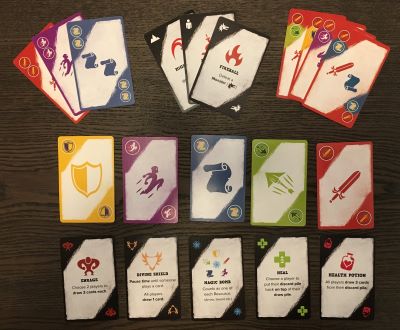Characters in roleplaying games are an extension of each player. Which is why character death is more than just a game mechanic—it’s a powerful tool for storytelling, tension, and personal growth. When a beloved character meets their end, it can be devastating for players. Yet, these moments also provide an opportunity to build resilience. In real life, failure often feels like a setback, but it’s actually a critical part of growth. The same is true in D&D: loss, adversity, and even death create some of the most cinematic and unforgettable moments in the game.
In my long-running campaign, we’ve had our fair share of tragic yet unforgettable character deaths. One of my favorites was a dwarf pugilist who heroically fought his last battle, only to be turned into a statue—immortalized in stone, a symbol of both his strength and vulnerability. A halfling midwife was vaporized in a split second by a green dragon, a gut-wrenching moment of loss that haunted the party for sessions afterward. A tiefling warlock sacrificed her very existence to save the rest of the group. Her selfless act transforming the party dynamic forever. These deaths were heartbreaking, but they were also cinematic, exciting, and pivotal moments in the campaign.

Character death, like failure in life, can feel like an ending. But in D&D, it is also a beginning—a chance to reflect, grow, and adapt. Just like the stories we tell in the game, our failures in real life can become part of a larger journey. They don’t define us, but they do shape us. The more we play, the more we learn that resilience is key to both the game and to life.
Three Tips for Building Resilience Through D&D
1. Embrace the Story, Not Just the Success
Death and failure are part of the journey. While everyone loves a victorious ending, the setbacks and losses are what make the victories truly memorable. When your character falls, think of it as an opportunity to add depth to your story. How does your party react? How does the world remember your character? By embracing these moments, you develop the ability to face and process loss, which is key to resilience.
Resilience Tip: Take time to reflect on what the character meant to you and the story. Honor their journey, even in their demise. The emotional impact will deepen your connection to the game and make your next character all the more meaningful.
2. Adapt and Overcome
Of course, the death of a character doesn’t mean the end of the campaign, and it shouldn’t mean the end of your engagement with the story. Whether it’s rolling up a new character or finding creative ways to re-enter the narrative (perhaps through a descendant or a resurrected version with lingering consequences), the game challenges you to adapt. This builds mental flexibility and teaches you to face challenges head-on rather than giving up.
Resilience Tip: When a character dies, brainstorm new ways to stay involved in the story. Maybe your next character can help the party move forward, or you can shift your focus to supporting other players’ stories. This ability to adapt strengthens resilience, both in the game and in real life.
3. Celebrate the Failure
Character deaths can feel like a failure, but often they’re the most memorable part of the game. Lean into those moments—remember them, share them, and laugh about them. Some of the greatest stories come from plans going wrong or characters meeting unexpected ends. Just as in life, failure is a stepping stone to growth, and those hard moments often lead to the most rewarding learning experiences.
Resilience Tip: After a character death, take time to celebrate the story of the character and what they achieved before their demise. Talk to your fellow players about the impact of the moment. By turning failure into a point of celebration, you can shift your mindset toward seeing challenges as opportunities for growth.
Final Thoughts
Dungeons & Dragons, like life, is filled with ups and downs. Character death and failure are inevitable, but they’re also invaluable. They teach us to roll with the punches, adapt to change, and find meaning in the struggle. The next time your character faces their doom, take a deep breath and remember: it’s all part of the journey. Through these moments, both in the game and in life, we build the resilience that carries us forward.
Resilience isn’t about avoiding failure; it’s about embracing it, learning from it, and continuing the adventure. So, let your character’s death become part of your legacy—because, in the end, the stories we tell about our failures are often the ones that shape us the most.



